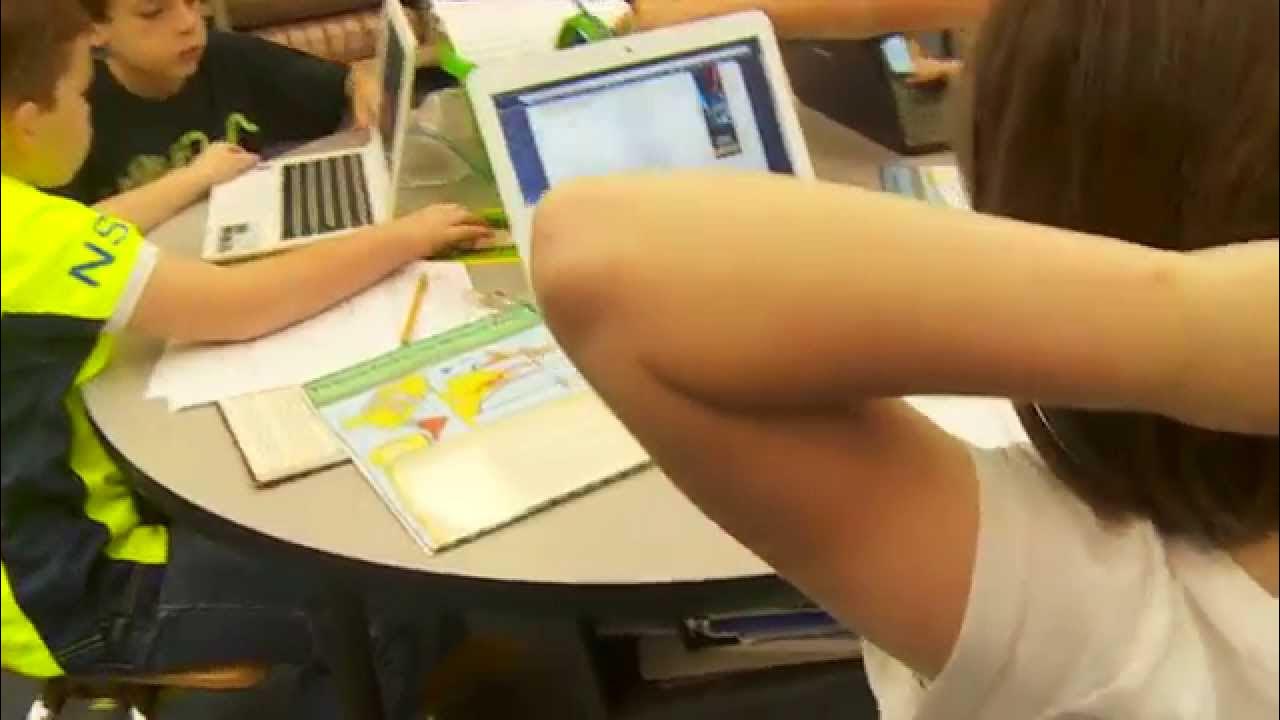Activate the Learning
Summary
TLDRRolla, a Grade 6 teacher, fosters inquiry-based learning in her classroom by engaging students in real-world projects, such as designing water filtration systems for First Nations communities. She emphasizes the Six Cs—Character, Citizenship, Collaboration, Critical Thinking, Creativity, and Communication—helping students develop essential life skills. Through collaboration with experts and peer feedback, students enhance their problem-solving abilities and build confidence. Rolla’s approach moves beyond traditional learning, encouraging reflection and self-assessment, and creating a positive, dynamic classroom culture where students are empowered to think critically, collaborate, and contribute meaningfully to their communities.
Takeaways
- 😀 Rolla integrates real-world learning for her Grade 6 students, focusing on global competencies like character, citizenship, collaboration, critical thinking, creativity, and communication.
- 😀 Rolla emphasizes inquiry-based learning, where students tackle real-life problems, creating meaningful and impactful solutions.
- 😀 Students work with experts to design water filtration systems for First Nations communities without access to clean water, giving them a sense of purpose in their learning.
- 😀 Students use thinking tools like the 'pro-pro' model to collaborate and assess the best ideas for solving complex problems.
- 😀 Authentic learning experiences promote critical thinking, collaboration, and empathy, with students building on each other's ideas to find solutions.
- 😀 Feedback from professionals, including a university professor, plays a key role in students' continuous improvement of their work.
- 😀 Rolla values individual student talents, promoting a classroom culture where diverse ideas are seen as assets to create better solutions.
- 😀 Collaboration and communication are central to the classroom culture, where students learn to listen, accept, and build upon others' ideas without judgment.
- 😀 Reflection is a core aspect of learning, helping students assess their progress and connect their actions to the overall learning community.
- 😀 Rolla's classroom fosters a growth mindset, where students move from being afraid to speak and collaborate to feeling confident and accountable for their ideas and contributions.
Q & A
What is the main educational approach Rolla uses in her classroom?
-Rolla uses an inquiry-based learning approach, where students engage in real-life problems and collaborate on projects to develop global competencies such as critical thinking, creativity, communication, collaboration, character, and citizenship.
How does Rolla's classroom environment support global competencies?
-Rolla intentionally builds classroom conditions and culture that promote real-world learning, allowing students to apply their knowledge and skills to address authentic issues, thus fostering global competencies like critical thinking and collaboration.
What role do experts play in the students' learning process?
-Experts, such as a University of Ottawa professor, collaborate with students to provide real-world feedback and guidance. This helps students enhance their designs, such as in the water filtration project for First Nations communities.
How do students assess their own learning in Rolla's classroom?
-Students self-assess their learning using NPPL rubrics. These rubrics are co-constructed with the teacher to ensure they align with the learning objectives and help students reflect on their progress.
What is the significance of using real-world problems in Rolla's teaching?
-By addressing real-world problems, Rolla makes learning more relevant and engaging for students. It helps them understand how their learning can make a tangible difference in the world and encourages the development of skills that are applicable beyond the classroom.
How does Rolla encourage collaboration in her classroom?
-Rolla encourages collaboration by having students work together on projects, share ideas, and provide constructive feedback to one another. This helps them build communication skills and learn how to work effectively as a team.
How do students learn to manage different perspectives and ideas?
-Students are taught to listen carefully to others, value diverse ideas, and build on them rather than judge them. This collaborative approach enhances their critical thinking and problem-solving skills.
What impact has this approach had on students who were initially reluctant to participate?
-Students who were previously afraid to speak or collaborate have shown significant improvement. They now feel their ideas are valued and have gained confidence in expressing themselves and contributing to group work.
How does Rolla integrate feedback into the learning process?
-Feedback is an ongoing part of the learning process in Rolla's classroom. Students receive feedback from peers, teachers, and experts, which they use to improve their work. This helps them refine their ideas and approach to projects.
What is the importance of reflection in Rolla's classroom?
-Reflection is a key component of learning in Rolla's classroom. It allows students to think critically about their learning experiences, identify areas for improvement, and understand the broader impact of their actions.
Outlines

Этот раздел доступен только подписчикам платных тарифов. Пожалуйста, перейдите на платный тариф для доступа.
Перейти на платный тарифMindmap

Этот раздел доступен только подписчикам платных тарифов. Пожалуйста, перейдите на платный тариф для доступа.
Перейти на платный тарифKeywords

Этот раздел доступен только подписчикам платных тарифов. Пожалуйста, перейдите на платный тариф для доступа.
Перейти на платный тарифHighlights

Этот раздел доступен только подписчикам платных тарифов. Пожалуйста, перейдите на платный тариф для доступа.
Перейти на платный тарифTranscripts

Этот раздел доступен только подписчикам платных тарифов. Пожалуйста, перейдите на платный тариф для доступа.
Перейти на платный тарифПосмотреть больше похожих видео

Project Based Learning: Why, How, and Examples

Station Rotation: Differentiating Instruction to Reach All Students

Exploring Fluency in Oral Communication (Part 1)

PERBEDAAN DISCOVERY, INQUIRY, PBL, & PJBL (MODEL PEMBELAJARAN)

Using Technology in the Classroom

Video Praktek Pembelajaran Kelas Rangkap Model 221 #karawang #Universitasterbuka #Ut
5.0 / 5 (0 votes)
